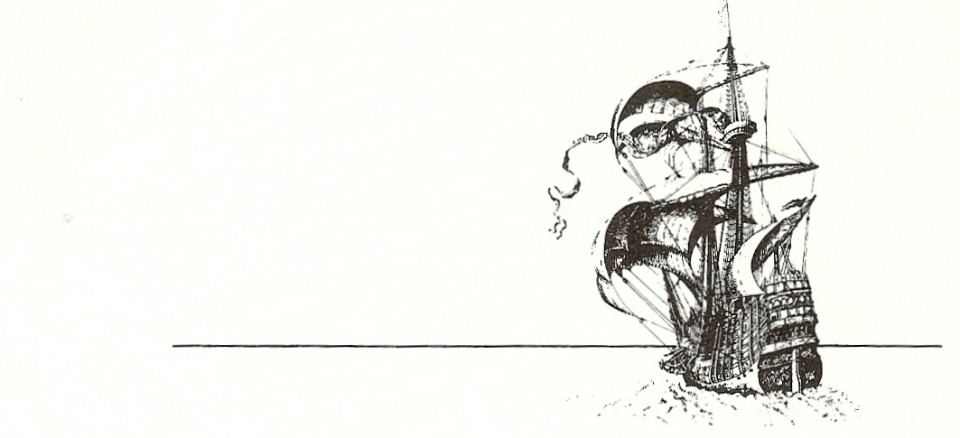Tags
Arnold Newman, Basques, Bolsheviks, Bretons, Edmond Taylor, Kasimir Malevich, Leo Castelli, Michael Pearson, Michael Peppiatt, New York art, New York’s SoHo, Nicolas Poussin, Occitanians, Paul Cézanne, sealed train, still life, The Blue Vase, Vladimir Lenin
The cover of this issue shows The Blue Vase (now in the Musée d’Orsay) by Paul Cézanne, accompanying the article “Father of Us All” by Michael Peppiatt, which includes a portfolio of Cézanne’s still lifes.
In his constant concern that each tone be exactly the one required by the overall chromatic scheme of his paintings, Cézanne was seeking to render much more than the surface of things seen under a certain light. He desired, as he said, to make ‘out of impressionism something solid and durable like the art of the museums.’ As one looks at the various versions of Mont Saint-Victoire, for example, one notices that underlying the intricate pattern of delicately modelled forms is a massive volume. Late in life, Cézanne said that the artist ‘must see in nature the cylinder, the sphere and the cone…’ The phrase is eloquent proof of his own search for the means to discover the essence of a subject – be it a mountain, a figure group, a bowl of fruit.
Such an approach is, of course, a perfectly classical one. Nothing could be less ‘impressionistic’ than Cézanne’s determination to make his scenes as internally coherent and changeless as possible. When he talked of doing ‘Poussin again, from Nature,’ he meant he aspired to his predecessor’s accomplishment of completeness and solidity, but by working directly from nature rather than by interpreting myths. How ironic that this innately classical painter long appeared to most of his contemporaries as a kind of savage obeying uncontrollable impulses!
…Born into a dying tradition that enshrined narrative effectiveness as its supreme value, Cézanne helped to set painting on a course that ended in complete nonrepresentation, the furthest remove imaginable from the nineteenth-century Salon. Within a decade or so of his death, the ultimate point in abstraction – Kasimir Malevich’s Suprematist Composition: White on White (a white square on a white ground) – was reached. The revolution thus accomplished was as total as it was brief, with the result that virtually every kind of present-day art refers back to it. Even Cézanne, in his most boastful moments, would have been astounded by the rapidity and breadth of his influence. And with good reason: his work has become more than famous, both in itself and as a reinvention of the vocabulary of painting.
 In ‘Transporting a Plague Bacillus’ Michael Pearson writes about the ‘Sealed Train’ which brought Lenin from Switzerland to Russia in 1917:
In ‘Transporting a Plague Bacillus’ Michael Pearson writes about the ‘Sealed Train’ which brought Lenin from Switzerland to Russia in 1917:
Suddenly on the afternoon of March 15 a friend hammered on the door with the news of revolution in Russia. Lenin’s existence was transformed. The day he had waited for so long, and prepared his party for, had arrived. But the Bolshevik party was small, even within Russia – with barely two thousand members in Petersburg and only forty-five thousand in all, it was dwarfed by other parties, including the Mensheviks. It was crucial that Lenin reach home before the long-awaited revolution was betrayed.
In March, 1918, the new Bolshevik government finally made peace with the Germans. It was a humiliating peace, made under threat of Russian military might: Russia had to relinquish her possessions in Poland, give up the Baltic states, Finland and the Ukraine; to Turkey, Germany’s ally, she ceded much of the Caucasus. The journey on the Sealed Train had served the Germans well…
Even today Soviet historians are sensitive on this point. Of course, any suggestion that Lenin was a German agent is absurd. His short-term aims coincided with the kaiser’s and he took funds where he could. In his eyes the source was irrelevant, for he believed that the world revolution would spread quickly from Russia to Germany. All the same, the publication of the secret German headquarters papers removed any doubts. The Germans did more than provide Lenin with the Sealed Train; they financed a strike for power, and it changed the world.
 ‘Bohemia Reborn’ is a pictorial essay by Arnold Newman, exploring New York’s SoHo neighbourhood, which had grown in the previous decade into an ‘art colony’, but one that was already rapidly gentrifying:
‘Bohemia Reborn’ is a pictorial essay by Arnold Newman, exploring New York’s SoHo neighbourhood, which had grown in the previous decade into an ‘art colony’, but one that was already rapidly gentrifying:
In ‘The Fourth World’, Edmond Taylor examines the recent rise of regional independence movements in Europe, including the Basques, the Bretons, and the Occitanians:
















